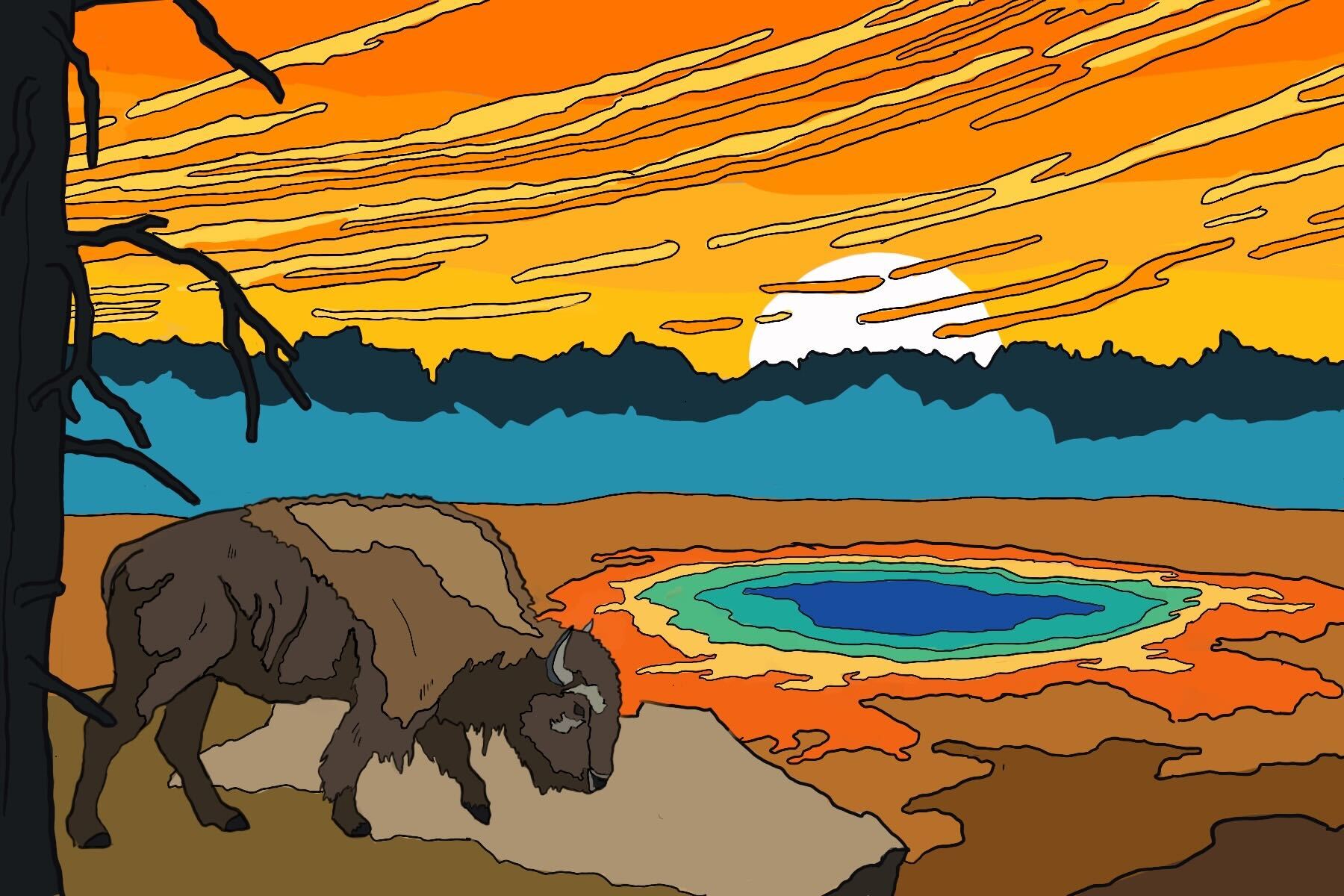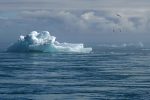National parks have an important place in the hearts of Americans everywhere, but as people neglect the environment, distinct and rapid changes mark their landscapes. Eventually, the beautiful parks that have been saved over the decades will disappear due to the effects of climate change. How soon will it be before people are unable to appreciate the natural scenery of the country?
Climate covers the typical weather patterns in a region over a long period of time. Climate change can occur naturally — before humans existed, Earth’s climate was already changing. However, climate change today is largely due to human activities, such as burning fossil fuels. Humans are increasing the levels of greenhouse gases, which wrap around the Earth and insulate heat; subsequently, greenhouse gas concentration is at its highest level in 2 million years. Temperatures on Earth have increased about one degree Fahrenheit in the last century, causing more natural disasters, more snow and ice to melt, higher sea levels and other disastrous events.
Climate change negatively impacts the environment in many ways, oftentimes causing droughts. Droughts limit food production and human health; water can become scarce, and there is a greater likelihood of wildfires. Hurricanes, other bad storms and flooding can occur because of climate change. These natural disasters are dangerous to people, animals and plants. Heat waves have become more common and will continue to increase in frequency, intensity and duration as people further pollute the environment. Air and water quality will worsen as well.
Each of these consequences of climate change can be seen in the national parks, especially because parks are warming at twice the rate as the rest of the country. Starting around the early 1990s, temperatures increased and caused a long-term drought at Saguaro National Park in Arizona. Saguaro faces droughts during the increasingly warmer winters, which helps spread the invasive buffelgrass. The droughts and high density of buffelgrass threaten the saguaro cactus, which the park is named for, so few new cacti have grown there. At Yosemite National Park in California, park staff suppressed low-intensity wildfires for decades, resulting in an overgrowth of grasses and shrubbery. The overgrowth, along with hotter, drier seasons, has resulted in more frequent, more intense and longer-burning wildfires. The wildfires endanger the parks and their ecosystems, but they also injure or kill people and release harmful smoke into the air. Within 30 years, Glacier National Park in Montana could lose its numerous and beautiful glaciers. The disappearance of glaciers at the park can change the land and water, threaten wildlife dependent on the ice, and worsen droughts.
A recent natural disaster occurred just weeks ago at Yellowstone National Park. On June 13, Yellowstone, located mostly in Wyoming, saw record flooding across the northern reaches of the park because of five inches of rainfall and between two and five inches of snow melt. Each of the five entrances to the park was closed to visitors, which has not happened during the summer season since the 1988 wildfires. All visitors were moved out of the park, but the southern portion of Yellowstone opened again on June 22 with some restrictions. To limit the number of visitors, park managers put a system in place that only allowed license plates ending in an even number to enter on even days and odd-ending plates on odd days. The northern portion of the park was expected to remain closed for the rest of the summer season, which ends at varying times starting in September through November — depending on the facility.
However, the closure of the northern loop was not permanent. On July 2, the northern section reopened, and the license plate system was lifted. While two of the five entrances remained closed to cars, the other three were open, and 93% of Yellowstone’s road system was operational for visitors. July 13 brought more openings to the park, with 88% of the backcountry open for visitors and limited visitation to places such as Slough Creek.
Lauren Beall, an assistant manager at the Old Faithful Lodge gift shop, explained that the Old Faithful region of the park was not hit by the storm, but she witnessed the chaotic aftermath of it. Before the park began its reopening process, employees at the visitor locations Mammoth Hot Springs and Tower-Roosevelt had to be relocated to the other visitor centers to continue their contracts. Old Faithful received 138 employees. Because of the excess number of employees, the start dates for new employees were pushed back to August, when the student employees return to college. When Mammoth reopened on July 2, locals from the nearby town of Gardiner took over the jobs because the storm flooded Mammoth’s sewage system, so the center could not sustain lodging or dining for employees or visitors. The road between Gardiner and Mammoth was also completely washed out, so employees must use the old stagecoach trail Old Gardiner Road.
To combat climate change, the National Park Service Climate Change Response Program (CCRP) was established in 2010. The CCRP concentrates its work on four areas: climate science, adaptation, mitigation and education. Adaptation is the primary focus of the CCRP, which aims to adjust to the actual or expected climate to manage risk related to vulnerabilities and capitalize on potential benefits.
As national parks become victims of climate change, Americans will lose traditions. The parks detail the history of the United States. Mesa Verde tells the story of the ancestral Puebloan people who lived there from 600 to 1300 CE through the preservation of nearly 5,000 archaeological sites in Colorado. The Petrified Forest contains many Native American sites in Arizona from four distinct Indigenous groups who populated the region at different times beginning in 13,500 BCE. Yellowstone has a history of occupancy dating back more than 11,000 years to the Tukudika people along with other Indigenous groups. The park also boasts a natural landscape with unique hydrothermal and geologic features and holds the distinction of not only being the first national park in the United States, but the first national park in the world.
National parks were created to benefit people. They exist for the education and enjoyment of people. The parks are vital in preserving biodiversity and habitats and for teaching about the importance of the environment. Parks provide thousands of jobs and economic support for surrounding communities.
Scientists theorize that by 2100, national parks will no longer reflect their original natural beauty but will rather be exhibits used to remember what has been lost. By then, temperatures at the most exposed national parks will rise by as much as 16 degrees. The joy brought by the parks will cease and perhaps be forgotten completely. Climate change will ruin the most beautiful parts of the United States. Without intervention, national parks will become obsolete, and the nation will lose what it treasures most.

















